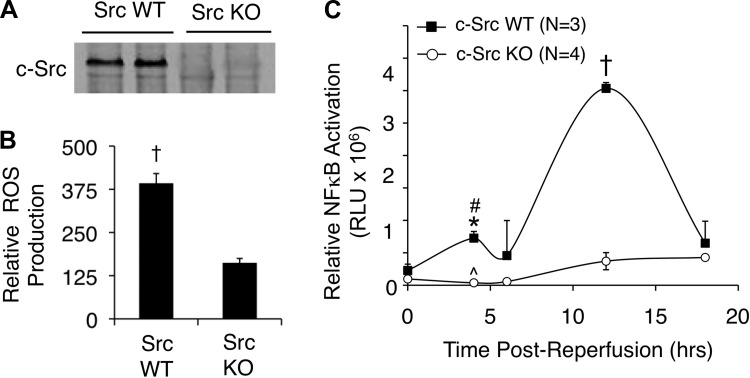Fig. 1.
c-Src deficiency reduces hepatic reactive oxygen species (ROS) production and NF-κB activation following hepatic ischemia-reperfusion (I/R). A: immunoprecipitation and Western blot for c-Src in liver lysates from wild-type (WT) or c-Src knockout (KO) mice. B: NADPH-dependent ROS production by hepatic endomembranes by lucigenin detection following liver I/R in WT and c-Src KO mice (45 min ischemia and 30 min reperfusion, N = 3 mice, ±SE). A statistically significant difference in ROS production between genotypes was observed by use of the Student's t-test (†P < 0.002). C: animals were preinfected with a recombinant adenoviral NF-κB-luciferase reporter vector 72 h prior to partial lobar hepatic I/R. Then 45 min of partial lobar ischemia was performed and NF-κB-luciferase reporter activity was assessed by biophotonic imaging on an IVIS imaging system. The zero time point represents pre-I/R luciferase activity and was not significantly different between genotypes (P = 0.1447). In all panels results depict means ± SE. The N independent animals are given. Statistically significant differences between genotypes were determined by a 2-tailed Student's t-test (*P < 0.001; †P < 0.0001). Statistically significant differences between the same genotypes comparing pre-I/R to post-I/R at the 4-h time point were determined by a 2-tailed paired Student's t-test (#P < 0.026; ^P = 0.1615).

